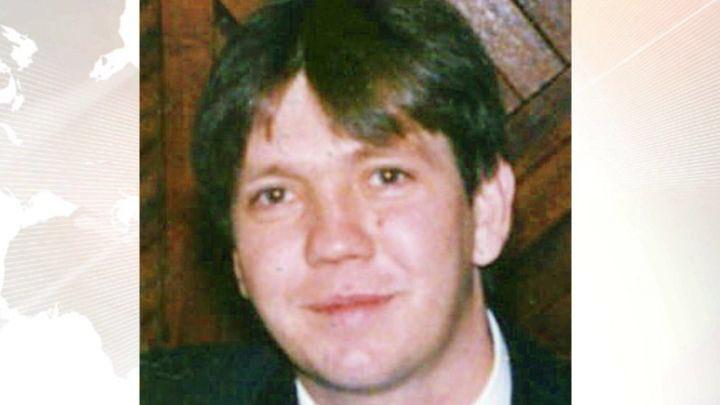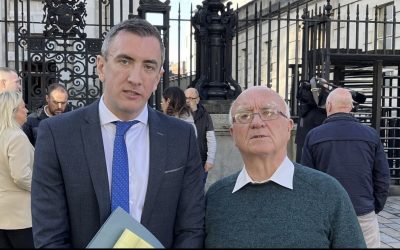
The Police Ombudsman has concluded that the original RUC investigation into the fatal shooting of Colum Marks ‘lacked independence and rigour’ and ‘was wholly inadequate’ given the seriousness of the incident.
For Immediate Release 18th March 2025
Colum Marks was shot by an RUC Officer, known as Officer B, on the evening of 10 April 1991 in Downpatrick, and later died from his injuries in hospital.
The shooting occurred during an intelligence-led counter terrorism operation which was intended to thwart a planned Provisional Irish Republican Army (PIRA) mortar attack on passing security forces, and to arrest suspects.
The RUC’s Criminal Investigation Division (CID) began an investigation immediately after the shooting.
A review of available documentation was undertaken by the Police Ombudsman investigation which included the interviews given by officers involved in that evening’s police operation, as well as an interview under caution with Police Officer B the day after the incident.
During this interview he was asked only five questions, two of which related to distance and lighting between two points on a map.
The Police Ombudsman Marie Anderson said,
“Given the seriousness of the incident, in the context of the European Convention on Human Rights Article 2 and the ‘right to life’, I am of the view that the original RUC CID investigation was wholly inadequate in a number of important respects,” said Mrs Anderson.
“Officer B’s interview failed to adequately examine his actions or mind-set at the time of the incident, and lacked the necessary depth and rigour expected in light of the fact that this was a fatal police shooting.
“Equally, the statements provided by other officers omitted critical detail about the planning, tasking, coordination and communications on the night. Significantly, they do not mention any briefings or information received prior to their deployment on this operation, including the suspects believed to be involved.”
The operation centred on the St Patrick’s Avenue area of Downpatrick and was under the direction and control of the RUC’s South Region Tactical Co-ordinating Group (TCG).
Previous investigations by the Police Ombudsman have established that the majority of TCG records detailing the management of covert operations at this time have been destroyed, and this also proved to be the case for the investigation into the circumstances of Mr Marks’ death.
However, evidence which was available, including radio transmission logs of the operation, showed that a man, later identified as Mr Marks, was seen carrying what appeared to be a mortar at 9.29pm on 10 April 1991. A few minutes later the same man was seen in the driveway of a house in St Patrick’s Avenue and the mortar was confirmed as having been assembled in the driveway at 9.46pm.
At 9.47pm officers were instructed to arrest the man, who then fled the scene across a recreation ground at which point the shooting occurred.
The Police Ombudsman, Mrs Marie Anderson, confirmed that the absence of TCG records severely hampered the investigation and, in particular, her ability to fully assess opportunities that may have been presented to arrest Mr Marks prior to his sighting at St Patrick’s Avenue with the mortar.
“There are no existing TCG records and there are no witness statements or depositions from TCG officers explaining their role and participation in the planning and decision making.
“I am unable to conclude, therefore, whether there was an opportunity to disrupt the planned mortar attack, to arrest Mr Marks before that evening or to arrest him prior to the first recorded sighting of him by Police Officer B at 9.29pm.
“However, from the evidence which is available, there was a short window of opportunity to arrest Mr Marks on that evening between 9.29pm, when he was first observed carrying the mortar, and 9.47pm when the instruction was given to arrest him.
“It is clear that police intended to arrest suspects in circumstances that connected them to the weapon, and the intent to commit an unlawful act, rather than possession of the weapon alone.
“In the presence of what was described as a viable explosive device, it is my view that this was a high risk strategy on the part of police whose primary duty was to protect life.”
Involvement of the Independent Commission for Police Complaints For Northern Ireland
Although the RUC had a mechanism to refer the shooting to the Independent Commission for Police Complaints for Northern Ireland (ICPC NI) which had oversight powers at that time, there was no record that any referral was made.
The ICPC only became involved when Mr Marks’ widow made a complaint to the body in November 1991, saying ‘an independent inquiry can be the only means for exposing the truth’.
Her complaint was then investigated by RUC Complaints and Discipline (C&D) under the ICPC’s supervision, and as a result, a further interview of Police Officer B was conducted under criminal caution.
Although Police Ombudsman investigators were able to review a list of questions which police intended to put to Police Office B during the interview, a transcript of this interview could not be located. The original documentation generated by the ICPC was also absent.
No criminal proceedings were subsequently directed against any police officer for any offence arising out of the fatal shooting.
Mrs Anderson said:
“I am surprised that the opportunity was not taken to refer the death of Mr Marks to the ICPC. This would have provided a measure of independent scrutiny of the investigation and gone some way to meet the requirements of Article 2 ‘right to life’ of the European Convention on Human Rights.”
“A thorough examination of the circumstances of Mr Marks’ death should have included scrutiny of the events preceding the fatal shooting and specifically opportunities that may have been presented to arrest him and others involved”.
Conclusion
“The investigation of complaints about historical matters is challenging due to the passage of time and unavailability of relevant witnesses and documentation.
“In their complaint, the Marks’ family sought clarity as to the events of 10 April 1991. Regretfully there remain unanswered questions due to the absence of records and in particular information about the TCG operation. The effect of the practice of destruction of these records is that the TCG operation has not been subject to independent examination and scrutiny.
“However, I am critical of aspects of the initial RUC CID investigation, particularly the initial under caution interview of Police Officer B on 11 April 1991. I am also concerned that this matter was not referred to the ICPC by the Chief Constable given its gravity. In consequence I conclude that the initial police investigation lacked sufficient independence and was not afforded the scrutiny and rigour that a fatal shooting of this nature warranted”.
Gavin Booth of Phoenix Law, who acts for the family said:
The findings of the Police Ombudsman supports the view that the family always held that the RUC did not properly investigate the fatal shooting of Colum Marks in Downpatrick on the evening of 10 April 1991.
It’s clear from the findings that there was time to arrest Colum prior to the shooting and this was not acted upon by the RUC at the time. We now know that for 3 days the RUC knew about this and opportunities clearly existed to arrest.
The Ombudsman was clear that Colum was unarmed, unmasked and not posing a threat when he was shot several times.
It’s wholly disappointing that much of the evidence was destroyed by the RUC and some former officers did not cooperate with this investigation.
Finally, it was accepted by PONI and the PPS that many questions remained unanswered.
